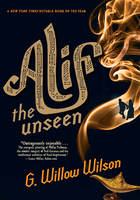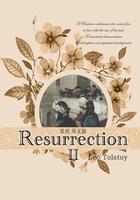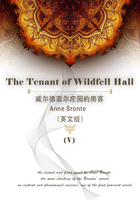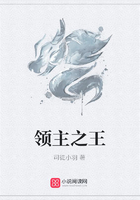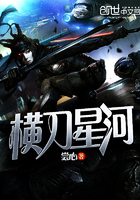Perhaps the most interesting fact about the Japanese raid upon Pearl Harbor, the most famous surprise attack of modern times, is that the plan had been evolved only one year previously and had been accepted by the Naval General Staff but five weeks before it was due to be launched. In war, however, this is not unique; quickly-improvised schemes are often the best and long-term plans can become too rigid and out-of-date. Flexibility is a key prerequisite for all commanders and armies.
Until early 1941 the Japanese plan in case of war against the United States was curiously like the American one. Both powers visualised an initial Japanese thrust southwards to seize the Philippines, followed by a major naval battle in the west-central Pacific when the American relief force reached that area. Japan's navy had been preparing for many years in anticipation of this clash, and she was confident that her gigantic Yamato-class battleships would be more than a match for the American Pacific Fleet. It was to be, her admirals hoped, a second and even greater Tsushima, a Trafalgar of the Pacific. Even the lessons of Norway, Dunkirk and Crete failed to convince them that the day of the battleship had passed; in fact, the belief that such vessels were the vital core of the fleet remained strong until Leyte Gulf.
One man, however, had come to disagree with this viewpoint. He was Admiral Isoruku Yamamoto, who was appointed Commander-in-Chief of the Japanese Combined Fleet in August 1939. An intelligent and perceptive leader, Yamamoto disapproved of aggressive expansion in Asia, and his experience in the United States caused him to have a great regard for her war potential. But he also believed in Japan's 'manifest destiny' in the Orient and realised that it could never be fulfilled unless American influence was expelled from the area. Moreover, Yamamoto's incisive mind much disliked the idea of having to wait for the American fleet to attack them: far better to strike first and swiftly, as Nelson had done at Copenhagen and Togo at Port Arthur.
Most important of all, Yamamoto suspected the value of the battleship in modern warfare. He himself had commanded the aircraft-carrier Akagi and had played a great role in the development of Japan's naval aviation; he continually agitated for more aircraft carriers, and urged the idea of using carrier planes to attack enemy ships whenever possible. Within a few months of assuming command of the Combined Fleet, he was toying with the idea of annihilating the American force at Pearl Harbor in one drastic blow, which would free Japan for her southward expansion. Taking into his confidence several of his air-minded colleagues, Yamamoto began to develop this plan in detail at the beginning of 1941. At the same time, the fleet's naval pilots were given intensive training in order to prepare them for the tasks ahead.
These secret plans were greatly boosted by the news of the successful British raid upon Taranto in November 1940, when three Italian battleships were sunk by only twenty-two Swordfish torpedo-bombers from HMS Illustrious. Eagerly gathering details of this attack, the Japanese redoubled their preparations and efforts. While Pearl Harbor was even shallower than Taranto harbour, it was known that the British were able to launch aerial torpedoes in very shallow water indeed; the secret here was to fit wooden fins on to the torpedoes to prevent them from 'porpoising' and hitting the bottom. At the same time, fins were fitted to 15-inch and 16-inch armour-piercing shells so that they would fall like bombs: not even a battleship's decks could withstand such weapons. The American Navy too had taken note of the Taranto raid and worried about the defences at Pearl Harbor; but Admiral Kimmel, the Commander-in-Chief of the Pacific Fleet, had objected to the suggested use of anti-torpedo nets because they would hinder boat traffic inside the harbour. He was soon to regret that decision.
By the middle of 1941, Yamamoto's plans were beginning to reach a wider audience; already he had selected the dour Admiral Nagumo to lead the task force, although the latter was very dubious about the success of such a risky venture. At the annual naval war games conference in Tokyo in September, the scheme was revealed to the senior officers of the Imperial Navy. It provoked immediate protests, particularly from the Naval General Staff, who felt that Yamamoto's proposed undertaking was a gamble. They preferred instead to keep to the original strategy, which down-graded the role of the aircraft-carrier. No decision was made at that conference, and the dispute spread throughout the senior ranks of the navy. However, on 25th November 1941 Yamamoto presented the Naval General Staff with an ultimatum—either the scheme was accepted, or he and his staff would resign. Faced with these stark alternatives, the opposition to the Pearl Harbor plan collapsed.
In the meantime, final preparations had been completed. Three routes to the Hawaiian Islands had been considered: a southern one, via the Marshall Islands; a central one, via Midway; and a northern one. Although the latter was subject to heavy seas and would involve two refuelling sessions for the escorting destroyers, it was eventually chosen. The great need was to escape discovery, and the two other routes were along shipping lanes and in areas patrolled by Hawaiian-based spotter planes, whose range had been recently increased from 200 to 600 miles. Bad weather along the northern route might force the destroyers to return but there would then be very little chance of detection. What vessels were encountered on the way would be sunk if they were British, American or Dutch, or held if they were neutral, by an advance screen of escorts.
The exact day, too, had also been decided. Since Admiral Kimmel always brought his fleet into harbour over the weekend, a Sunday morning would probably find the vessels all at home, unprepared for action and only half-manned. The attack had to be no later than mid-December because of the growing fuel shortage; because the Manchurian winter would have started, and would protect the now weakened Kwantung Army from a surprise attack; and because after that time the monsoon would be at its height, which would prevent amphibious landings in Malaya and the Philippines. Sunday 7th December (Hawaiian time) seemed ideal, for there would be no moonlight and the tides would be just right for the Malayan and Siamese landings.
This day would have been favourable for an amphibious invasion of the Hawaiian Islands as well, but this idea was rejected. All the troops and troopships were needed elsewhere, and it would have taken an immense force to conquer the group: it was estimated that there were 43,000 US servicemen on Oahu alone. Such a massive convoy would almost certainly have been detected, since it could not travel by the turbulent northern route. The only other Japanese forces involved would be five midget submarines, whose two-man crews planned to sacrifice themselves in an attempt to cripple American warships in harbour.
These suicide craft were taken from Kure naval base on 19th November on the back of five of a force of twenty-seven large I-class submarines, which were to patrol outside Pearl Harbor. Seven days later, the main task force set out from Tankan Bay in the northerly Kurile Islands; its speed was thirteen knots, and radio messages were restricted. Under Admiral Nagumo sailed the six large carriers Akagi, Kaga, Shokaku, Zuikaku, Hiryu and Soryu, carrying 423 aircraft. Of these planes, 360 were to be used in the attack—81 fighters, 135 dive-bombers, 104 high-level bombers, and 40 torpedo-bombers. The carriers were escorted by 2 battleships, 2 heavy cruisers, 9 destroyers and 3 submarines, and were accompanied by 8 tankers. The chief targets for the bombers were, in order of importance, the American carriers (possibly 4 but at least 2); the Pacific battle-fleet of 8–9 capital ships; the oil-tanks and other port installations; and the aircraft on Wheeler, Hickam and Bellows Fields. Could all this be achieved, Japan's supremacy in the Western Pacific would be assured.
By now, the crisis point was approaching. On 2nd December (following the Imperial Conference of the previous day), the decision to attack was confirmed. The ships were darkened and went on increased alert. Heavy seas washed several sailors overboard but no time could be lost in searching for them. Speed was increased to twenty-five knots on the 4th, despite the risk of collisions in the fog. From the Japanese consulate at Honolulu, the vice-consul Yoshikawa sent a continuous flow of information upon American ship movements, which was relayed via Tokyo to Nagumo. At midnight on Friday 6th December (5th December Hawaiian time) the striking force was still undiscovered and the admiral made his final decision to go ahead with the attack: no turning back was now possible. The only worrying fact was that the American aircraft-carriers were still reported missing from Pearl Harbor, even on the Saturday evening. Nothing, however, could be done apart from hoping that those ships might return by the next morning.
With only fifteen hours to go, Nagumo's task force was racing swiftly southwards towards Hawaii. On Akagi's masthead flapped the famous Rising Sun battle-flag which Togo had used at Tsushima. Messages from the Emperor and Yamamoto were read out, and toasts drunk. Then the crews went through their final preparations and waited with tensed nerves for the dawn. Even before then Nagumo, eager for more information, had decided to risk detection and flew off two reconnaissance aircraft; but no reports were sent back. Precisely at 6am the first attack plane roared away from Akagi's deck, followed by another 182 in this first wave. The die was cast. For Nagumo, and his staff, there began a time of nervous waiting; for the flyers, a chance to make history.
What of the American side? As mentioned before, Washington had been able to decode all the Japanese diplomatic messages and was aware that sometime after 29th November things were to start happening: the instructions to withdraw Embassy staff and to destroy all secret messages were clear indications that war was only a matter of days away. The report of troopship movements in the South China Sea on 6th December clearly pointed to Japanese attacks on the 7th or 8th. In none of the deciphered diplomatic messages, however, was a blow at Pearl Harbor mentioned, and it is clear that the Americans, while expecting an assault upon Thailand, Malaya or the Philippines, scarcely believed that the Japanese would risk a strike at Hawaii. Moreover, this decoded information was restricted to the top Intelligence heads and Cabinet officers—no-one at Pearl Harbor read the messages—and it involved a vast amount of diplomatic reports and instructions which had been picked up throughout Asia and the western hemisphere. Inevitably, the excessive secrecy and the backlog in decoding all this traffic prevented the Americans from making full use of this wonderful Intelligence advantage.
On the other hand, certain unofficial diplomatic sources had suggested the possibility of a Pearl Harbor attack, and several local commanders had worried about being caught unawares; yet the idea had been dismissed as 'fantastic' by US Intelligence. Furthermore, the Japanese consulate at Honolulu had been requested on 24th September 1941 to provide frequent and detailed information on locations of all American warships in Pearl Harbor—obviously so that Yamamoto's airmen could plan their strike. However, this intercepted order was disregarded by the Americans. Overlooked, too, was the report of the liner SS Lurline that its radio officer had picked up incoherent low-frequency signals of a force moving towards Hawaii at the beginning of December. In fact, only one chance to warn Admiral Kimmel and General Short was left: after the decoders in Washington had reported that the final Japanese reply was to be delivered at 1300 hours on the 7th (dawn in Honolulu), General Marshall warned the Philippines, San Francisco, Panama and Pearl Harbor to 'be on the alert accordingly' at that hour. However, a series of accidents resulted in this message being sent by commercial channels and even by a bicycle messenger at Honolulu; by the time it reached Kimmel his battlefleet had been wiped out and Nagumo's force was retiring westwards.
At Pearl Harbor on that early Sunday morning, therefore, precautions were very relaxed and it would have been hard to believe that Japanese-American relations were at crisis point. The first signs of anything unusual came with the sighting of a midget submarine by an American minesweeper around 0345 hours; and at 0630 another was seen and attacked by the patrols, but it was almost an hour later before this news was circulated and then only to the navy. At 0702, though, a radar station on Oahu Island picked out a large force of aircraft (over one hundred it was guessed) coming from the north but this was interpreted by the inexperienced officer at the information centre as being a flight of B-17s expected in from California—although only twelve of these were due and they would approach from the east! The final opportunity to prepare for the raid had been lost.
At 0745 the half-incredulous Japanese pilots flew over Oahu: they had encountered no enemy planes, no flak, and the scene below appeared peaceful, with the twin rows of battleships lying at anchor off Ford Island in the centre of Pearl Harbor. Surprise, even to the last, was complete. Signalling this news to Nagumo by means of the codewords 'Tora, Tora, Tora', the leading pilot Fuchida then directed his squadrons onto the unsuspecting prey. Fighters, dive-bombers, torpedo-bombers, high-level bombers, all turned to their respective targets. The great air bases of Wheeler and Hickam Fields, crowded with rows of fighters and bombers, were strafed and bombed by the jubilant Zeros and Vals. Hangars and barracks, aircraft and ground vehicles, were all destroyed in the onslaught, as were hundreds of men. Shortly before 0800 the alarm was given out: 'Air Raid Pearl Harbor! This is no drill!' It was, however, too late and very few aircraft were able to get off the ground to attack the raiders. At the other airbases, too, havoc and destruction was wrought by the unchallenged Japanese.
The central point of the attack was off Ford Island, along the appropriately-named Battleship Row, where the pride of the US Pacific Fleet lay. Shortly after 0800, the Kate torpedo-bombers were skimming across the harbor and dropping their well-aimed torpedoes. Unimpeded by the nets which Kimmel had declined to use, such weapons were terrible in their effectiveness. Almost immediately, the battleships in the outside line, Oklahoma, West Virginia and California, were hit and began to list. The two later waves of Kates crippled the cruisers Helena and Raleigh, the minelayer Oglala and the target ship Utah; and by that time the dive-bombers too were plunging upon these hapless targets. Struck in the innards, the battleship Arizona exploded with a tremendous roar while other vessels were also badly hurt. Fuchida's own high-level bombers had joined the fray and were carefully picking off the massed targets one by one. The scene was one of incredible chaos and the harbor was full of listing, burning ships, diving aircraft and puffs of flak.
At 0825, just as the first force of aircraft were retiring, a further 170 arrived on the scene. Although all surprise was of course lost and the defenders were helped to a certain extent by the billowing smoke, the Americans were hardly equipped to beat off such numbers. Few of their own aircraft had managed to get airborne and the army's anti-aircraft fire was ineffective; only the warships themselves offered much opposition to the horde of attackers. In fact, they managed to down twenty enemy planes, whereas less than half that number had fallen during the first attack. But the price was high, for there were still many tempting targets in the harbor. The battleship Nevada's attempt to get clear of the line of blazing ships attracted Japanese attention and she was hit many times before beaching on the side of the main exit channel. The docks area was fiercely bombed, and among the ships hit was the fleet flagship Philadelphia. By 0945, however, it was all over and the Americans could concentrate upon putting out fires and trying to save their stricken ships. Yet so worried were they about a third strike, or an invasion, that martial law was declared, a full watch maintained, and several planes flying in from the US carrier Enterprise were shot down by mistake later that morning.
But there was no invasion, nor even a third aerial attack. Although Fuchida pressed for this, Nagumo was only concerned to get out of the area now that his appointed task was complete. Turning north at 1330, the carrier force set off for home, apart from the Soryu and Hiryu, which were despatched with their escorts to cover the invasion of Wake Island (where the small garrison of US Marines was to fight desperately against heavy odds until 23rd December). By 24th Nagumo's ships were filtering into Japanese harbours and receiving a tremendous reception. Overnight Fuchida and his fellows had become national heroes. They had preserved Japan's honour and formidable fighting reputation; they had emulated, or even surpassed, the exploits of Admiral Togo; they had assured their country of victory.
Or had they? The benefits to Japan from the Pearl Harbor raid were undoubtedly great. The US Pacific battle fleet had been put completely out of action. The Arizona, Oklahoma, West Virginia and California were sunk, the Nevada was forced to beach herself, and the Maryland, Tennessee and Pennsylvania were damaged (only the Arizona and Oklahoma were to be complete write-offs, though); the target ship Utah and minelayer Oglala were lost; and 3 cruisers, 3 destroyers, a repair ship and a seaplane tender were badly damaged. 188 aircraft were destroyed, and many others damaged. Over 2,400 American lives were lost. In contrast, the Japanese lost only 29 planes and less than 100 lives. All five of their midget submarines, which proved to be failures even during the air attack, were lost.
On a wider sphere, the raid secured the important southern operations, which were no longer in fear of interruption by the Pacific Fleet. Also, Nagumo's task force could thereafter be employed elsewhere, against Java or Ceylon, without having to guard their eastern flank. Finally, this annihilation of the American battlefleet gave Japan her chance to build up her 'Festung Nippona' so that it would be strong enough to withstand counter-assaults.
Nevertheless, the Pearl Harbor attack had not been a complete success. Indeed, Fuchida realised this and had therefore pressed the unbending Nagumo to initiate a third strike. The air-minded commander appreciated what the admiral did not, that the aircraft carrier was the key naval weapon and that the American flat-tops must be destroyed. (In fact, the Enterprise, cruising not far from Hawaii, had only narrowly escaped detection.) Missing these was a serious blow indeed, as Yamamoto himself saw when it was reported to him. It could also be argued that the destruction of the battleships prematurely forced the US Navy to adopt the carrier as the backbone of its Pacific Fleet—with spectacular future results. Moreover, the vital oil installations and machine shops were left intact; had these been destroyed, then the fleet would certainly have been forced to operate from California instead. Better still for Japan, despite the large forces it would have demanded, would have been the seizure of the entire Hawaiian group. This would have halted the American comeback for years, and allowed the Japanese to take and develop South-East Asia at their leisure.
One final unfortunate consequence of the raid lay in the political sphere. Roosevelt had been steadily trying to offer more support to the British in Europe, and to take a strong line in the Far East, but his isolationist public had prevented him from doing either. Japan's surprise attack, followed by Hitler's declaration of war upon the United States, solved Roosevelt's problems. Outraged by their enemies' infamy, the American Congress and people entered the war with a unified determination to win it, whatever the cost, and her enormous industrial potential was soon geared to this overriding aim. Little wonder, then, that Winston Churchill went to bed on the evening of 7th December 'and slept the sleep of the saved and the thankful'; little wonder, too, that the perceptive Yamamoto was already wondering how long Japan's run of victories would last.


